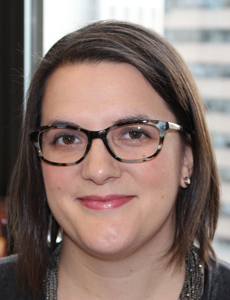Specialty Risks
Art on the Move

Fine art transportation insurance experts agree that it’s a tough specialty market to write.
“Regular motor truck cargo underwriters don’t want to write it because of the high values of fine art and the specialized nature of it in the event of loss — for example, irreplaceable loss in value, conservation efforts, etc.,” said Houston-based Adrienne F. Reid, assistant vice president, Huntington T. Block Insurance Agency, an operating unit of Aon.
“And fine art underwriters are leery of it because of the transit and handling volume inherent to the class,” Reid said.
Eric Fischer, senior vice president in Willis Fine Art’s metropolitan D.C. office, noted that the broker has to shop around for carriers that want to provide this kind of coverage.
“A lot of them, even the ones that do commercial trucking insurance, are terrified of the values that museums and specialized fine art shippers face,” said Fischer.
“There are very few companies that actually want to take on this exposure.
“Lloyd’s does a nice job,” Fischer added. “And there are some other ones that do the smaller policies for us. Berkley and Aspen Specialty, for example.”
Pricing the cost of shipping and handling can be tricky.
While losses rarely happen, it seems obvious that the freight carrier or warehouse should pay for any damage that results from their own negligence.
“But that is not always the case,” said New York-based Eliot L. Greenberg, an attorney with Rosner Nocera & Ragone LLP.
“In fact, even when they cause the damage or loss, there is a very good chance that any recovery will be limited to as low as 60 cents per pound. While it may seem grossly unfair, federal law permits interstate freight carriers to limit their responsibility to a nominal sum even when the damage is caused by their negligence,” Greenberg said.
“The basis for the law of allowing interstate truckers to limit their liability is to keep the costs of moving goods across the country affordable.”
For shippers to protect themselves, they should either rely upon their own fine art insurance policy to cover their artworks, or declare the artworks’ value to the freight carrier/warehouseman to avoid non-reimbursable damage or losses to their collection, Greenberg noted.
“We provide insurance for the owners of artwork,” said Bob Opitz, vice president and worldwide inland marine manager, Chubb Group of Insurance Cos., based in Whitehouse Station, N.J.
“We typically don’t get involved in arranging for the transportation or selection of the carrier per se.”
“We’ll provide the fine art insurance and evaluate the transport company that’s going to move the art. We’ll look at how the art is going to be moved, how it’s going to be packaged, when it’s going to leave and arrive, and what type of condition it’s in before it’s shipped and upon arrival at its final destination.”
“… Even the [carriers] that do commercial trucking insurance are terrified of the values that museums and specialized fine art shippers face. There are very few companies that actually want to take on this exposure.” — Eric Fischer, senior vice president, Willis
Opitz noted that there are a lot of environmental impacts that can influence a shipment of art depending on what the art is.
“You really want a company that understands those types of nuances and can provide the customer with the state-of-the-art packaging and transportation experience that you’d want for a shipment of artwork,” Opitz said.
Mary Pontillo, vice president and manager of the fine arts department at DeWitt Stern Group fine arts broker in New York, said her firm carefully checks out prospective art transport clients because of the highly specialized nature of the business.
“When deciding who to do business with, we go into the facility and we ask them about the operations,” noted Pontillo.
“We get a feel for things because this is a class of business that can be very challenging to place in the marketplace.
“That means checking out everything from their hiring procedures to their operational guidelines, to the way they take care of the facility, to how they take care of the important paperwork and legal aspects for the contracts.”
DeWitt Stern Group acts as the broker to place the actual fine art insurance and sometimes P&C insurance for the fine arts packers and shippers, and museums.
“We take over the actual request for the packers or shippers, everything from a client wanting to use the packers and shippers insurance to providing them with certificates of insurance so they can deliver a work of art to a commercial building that requires proof of liability and workers’ comp and commercial auto insurance before they’ll let a person pull up a truck to deliver an artwork,” said Pontillo.
Lloyd’s Likes It
She noted that at this point DeWitt Stern Group has all but one of its shipping and packing clients with Lloyd’s of London.
She noted Lloyd’s is in a positive position competitively because of its ability to spread the risk of an art shipping contract over a combination of its syndicates.
Lloyd’s insurers offer what is called “nail to nail” fine art insurance. First developed by Hiscox, the cover insures fine art in transport from one hanging to another, and pretty much everything in between.
The high value of fine art makes even small amounts of damage a sizable loss, according to Hiscox. This “volatility” in fine art claims, the very large sums insured and the need for bespoke underwriting, lends itself to Lloyd’s, Hiscox said.
XL Group has two categories of transit insurance, said New York-based Jennifer Schipf, senior underwriter, vice president of fine art and specie.
“The most visible participation is insuring quite a number of galleries, museums and private collectors for their permanent collections or their gallery inventory, and increasing a degree of transit coverage for a portion of sub-limits of their collection in every one of those classes,” Schipf said.
“The second way is we do insure some packers and shippers and warehouses that offer transport services to other clients or to collectors, museums and galleries who may or may not be existing XL clients,” Schipf added.
XL Group operates on a truly global business basis, meaning that Schipf will never be in a position to be in conflict with one of her colleagues at Lloyd’s or one of the underwriters in Zurich or Singapore because they all operate as one integrated business unit.
“So if we have a collector client in New York who is moving to Hong Kong and is investigating warehouses in Singapore they may call us for help and I can call my colleagues and ask, ‘Which one do you recommend?’
“That means we get a lot of education and experience on the global fine art scene rather than if we were just focused on the U.S. or Europe, for example,” Schipf said.
Schipf noted that the best way to find good vendors and suppliers is through word of mouth; asking other dealers, registrars or private collectors what their experiences have been has helped her clients do well in avoiding problems.
“Word of mouth seems a very good way to vet resources,” she said.
Karen Griswold, senior vice president of ACE Group’s marine branch, noted that as a full-service marine insurance provider, her group can offer coverage for various types of transportation risks, including fine art risks.
“In conjunction with our in-house loss control team, we have the ability to assist with discussions on packing methods and standards of care particular to the transportation of art,” Griswold noted.
Coverages offered by ACE include ocean cargo, foreign and domestic inland transit, warehouse and warehouse legal liability. All standard perils could be underwritten, including fire, water damage, rough handling, theft and catastrophe perils.
For traveling exhibitions, ACE handles the underwriting of the specific location and transportation to and from locations; the handling of the goods before, during and after the exhibitions; and careful vetting of security and safety measures.
Corporate collections and small to medium sized museums are underwritten through the ACE USA commercial marine group.
At Aspen Insurance’s U.S. marine group, New York-based Senior Vice President Joseph Partenza stressed that security in shipping art is one of his firm’s highest priorities.
“We focus on security measures that may be in place, especially for high-valued shipments,” said Partenza.
“Will there be two drivers, and will they be stopping overnight? For extremely high-valued objects, will there be tandem trucks in front of and behind the main vehicle carrying the art?”
Partenza looks to see if there are any holes in the transport process, at which point Aspen may choose to make a suggestion, or in some cases demand, that the client enhance the quality of the packing and shipping process.
“We will work with the broker to provide feedback to the client regarding our suggested improvements,” Partenza said.
Condition reports to be taken throughout the journey are a very critical point because without a condition report up-front, you could have art that was damaged before shipment. That creates a very difficult loss adjustment process down the road.
When it comes to warehousing, Partenza said Aspen prefers to work with fine arts specialty warehouses.
“We don’t like mini-storage facilities that anybody could enter,” Partenza said.
“We prefer high-quality outfits that have redundant measures in place, and that really understand the art business.”












